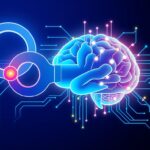In today’s fast-paced world, the profound impact of tech permeates every facet of our lives, from how we communicate to how we manage our health and educate ourselves.
With the rapid advancements in smart technology, we are not merely consumers; we have become active participants in a technologically driven ecosystem that is reshaping day-to-day experiences.
This article delves into the ways tech is transforming our daily routines, enhancing communication, revolutionizing health care, and facilitating innovative learning environments.
Join us as we explore these trends that are not just a part of the future, but integral to our present.
Key Takeaways
- Smart technology is increasingly integrated into our daily routines.
- Technology has reshaped communication, enhancing connections but also creating challenges.
- Health tech innovations are improving personal wellbeing and healthcare accessibility.
- Educational technologies are revolutionizing learning, especially in remote settings.
- The continuous evolution of tech impacts various life aspects, requiring adaptation and awareness.
The Rise of Smart Technology in Everyday Life
In today’s fast-paced world, the rise of smart technology has revolutionized the way we interact with our everyday lives.
From smart thermostats that learn your temperature preferences to home assistants that manage your schedule, tech has seamlessly integrated into our daily routines.
This shift towards automation not only enhances convenience but also promotes energy efficiency and improved productivity.
Moreover, the internet of things (IoT) continues to expand, connecting a multitude of devices and allowing for greater control and customization.
As we delve deeper into the age of smart technology, it’s essential to understand its implications and how it shapes our modern lifestyle.
Impact of Technology on Communication and Relationships
The impact of technology on communication and relationships has been profound, reshaping how we connect with one another in both personal and professional realms.
With the rise of tech, traditional methods of interaction, such as face-to-face conversations, have seen a decline as people increasingly rely on digital platforms for communication.
Social media, messaging apps, and video calls have made it easier to maintain connections across long distances, yet this convenience often comes with a price.
The quality of relationships can sometimes suffer due to the prevalence of brief, impersonal exchanges over meaningful conversations.
Moreover, technology has introduced an element of distraction, making it challenging for individuals to engage fully during interpersonal interactions.
As we navigate this new landscape, it’s essential to find a balance that leverages tech to enhance our relationships rather than hinder them, ensuring that we nurture genuine connections in an increasingly digital world.
‘Technology is best when it brings people together.’ – Matt Mullenweg
Advancements in Health Tech and Personal Wellbeing
In recent years, advancements in health tech have revolutionized the way we approach personal wellbeing, merging innovative technology with everyday health practices.
From wearable devices that monitor vital signs to mobile applications that provide personalized fitness plans, tech is at the forefront of enhancing our health and lifestyle choices.
These innovations not only empower individuals to take control of their health by making informed decisions based on real-time data but also facilitate access to medical resources that were once difficult to obtain.
Moreover, the integration of artificial intelligence in diagnostic tools is improving accuracy in detecting health issues at earlier stages, proving to be a game changer in preventative healthcare.
Embracing these advancements in tech not only fosters a culture of continuous improvement but also supports mental well-being by encouraging users to stay active and engaged in their health journeys.
The Role of Tech in Education and Remote Learning
In recent years, the role of tech in education and remote learning has become increasingly prominent, transforming the way students engage with their studies.
Technology enhances accessibility and creates a dynamic learning environment, enabling educators to deliver personalized content that caters to diverse learning styles.
Through the use of online platforms, interactive tools, and digital resources, tech fosters collaboration among students and teachers, making remote learning not only feasible but also effective.
Moreover, educational apps and virtual classrooms facilitate real-time communication and feedback, ensuring that learning continues beyond traditional classroom settings.
As we embrace this digital age, understanding the impact of tech on education is essential for both educators and students alike.
Frequently Asked Questions
What are some examples of smart technology being used in everyday life?
Examples of smart technology include smart home devices like thermostats, security cameras, and voice assistants such as Amazon Alexa or Google Home.
Additionally, wearable fitness trackers and smartwatches are also part of the smart technology landscape.
How has technology impacted communication and relationships?
Technology has revolutionized communication by making it easier and faster to connect with people through social media, messaging apps, and video calls.
However, it also poses challenges such as reduced face-to-face interactions and potential misunderstandings in digital conversations.
What advancements in health tech have improved personal wellbeing?
Advancements in health tech include telemedicine services, which allow patients to consult healthcare providers remotely, and wearable devices that monitor health metrics like heart rate and sleep patterns, enabling proactive health management.
In what ways has technology transformed education and remote learning?
Technology has transformed education by providing online learning platforms, enabling access to a wealth of resources and courses.
It has also facilitated remote learning through video conferencing tools, allowing students to connect with teachers and peers from anywhere.
Are there any downsides to the rapid integration of tech into our lives?
Yes, while technology offers numerous benefits, it can also lead to issues such as digital addiction, data privacy concerns, and a widening gap in access to technology between different socio-economic groups.

